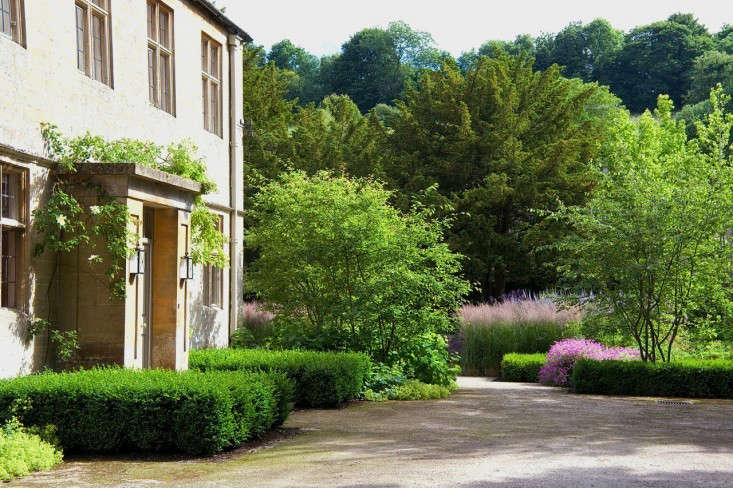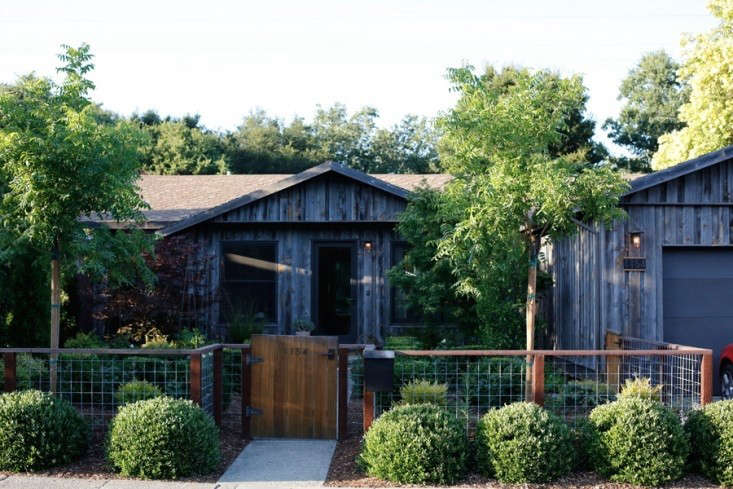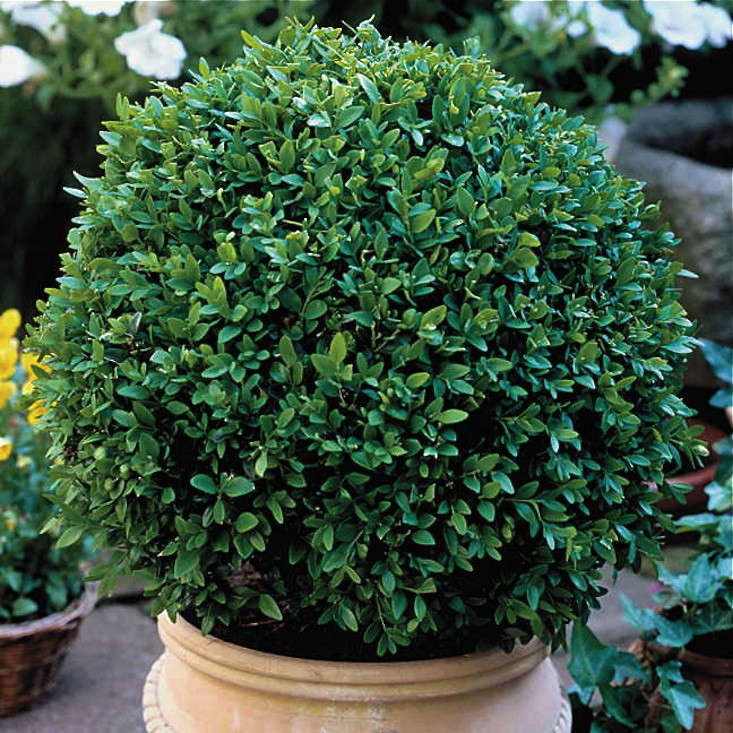Some container plants are too much trouble. Not boxwood. It’s easy to create curb appeal with this evergreen shrub because well-behaved box won’t lose its leaves, outgrow its pot, or clash with other colors. Here are nine of our favorite ways to use boxwood as a container plant:
Global Thinking

Emphasize the geometry of a round boxwood ball by planting it in a round or square pot. If you’re looking for simple wooden planters to complement the round shape of boxwood balls, see 10 Easy Pieces: Wooden Planters.
1+1 Equation

Go Shaggy

For more garden design ideas using boxwood, see Gardenista Roundup: For the Love of Boxwood.
Asymmetry

Asymmetrical groupings of planters work well because they all repeat a single theme: boxwood.
Scatter Pattern

Choose Wisely

There are more than 70 species of boxwood, of which the most common in Europe and the US is Buxus sempervirens.
Varieties of Buxus sempervirens have widely different characteristics. For instance, ‘Green Gem’ is a slow grower and tolerates cold well. ‘Green Mountain’, which grows quickly and in a rounded cone shape, is a good choice for a hedge. ‘Fastigiata’ is tall and skinny with blue-tinged leaves. ‘Suffruticosa’ is the classic English box with soft, rounded leaves.
In containers, consider planting miniature box. Varieties of Buxus microphylla include ‘John Baldwin’, which grows in a conical shape; ‘Green Beauty’, a good substitute for English box if you have full sun; and ‘Green Pillow’, with a dense and low growth pattern.
Clipping Service

For our boxwood growing guide, see Field Guide: Boxwood.
Boxwood is extremely easy going; you can clip it into balls–or into spheres, cones, or more fanciful shapes–and it will hold its shape for months.
Feeling whimsical? To see how to shape a shrub into a boxwood bear or boxwood bird, visit a reader’s Secret Garden: Fanciful Topiary in the Berkshires.
Cloud Pruning

For visual interest, place a planter with a tightly clipped boxwood ball in the foreground against a backdrop of cloud pruned shrubs. For more on cloud pruning techniques, see 10 Garden Ideas to Steal from Japan.
For more instant curb appeal, read 11 Ways to Add Curb Appeal for Under $100.
See more tips for care and pruning at Boxwood: A Field Guide to Planting, Care & Design and some of our favorite evergreen alternatives to box in our curated design guide to Shrubs 101, including Yew, Rosemary, and Privet. Read more about boxwood:
- English Boxwood: Is It Worth It?
- Gardening 101: Boxwood
- The English Gardener: Just a Little Off the Sides, Please









Have a Question or Comment About This Post?
Join the conversation